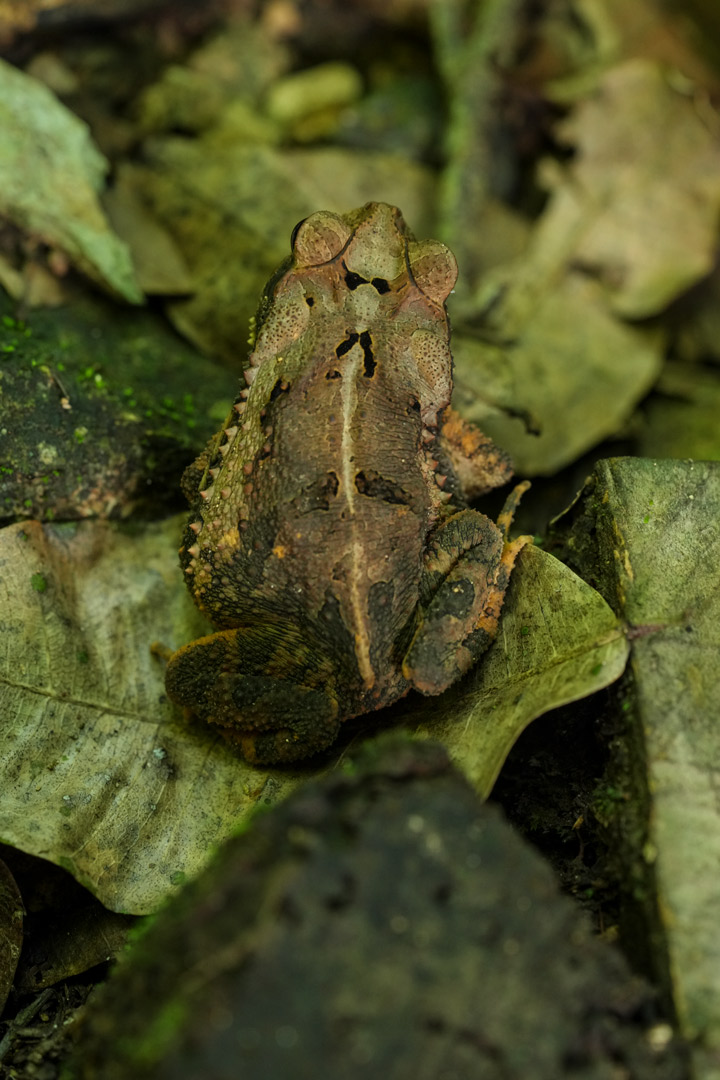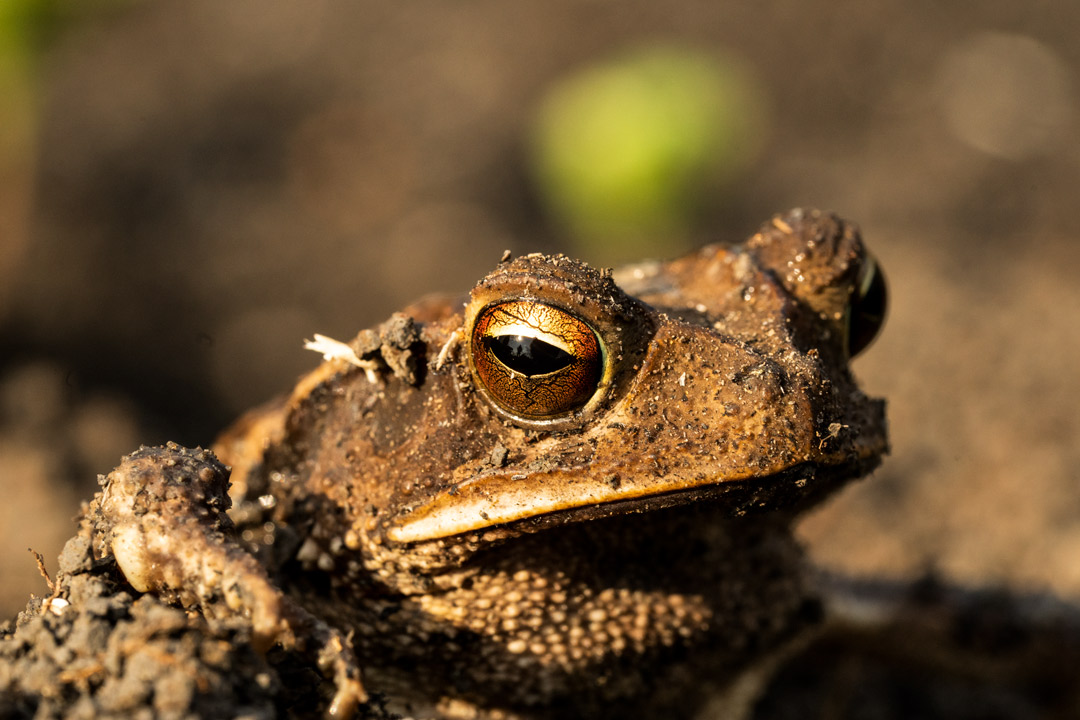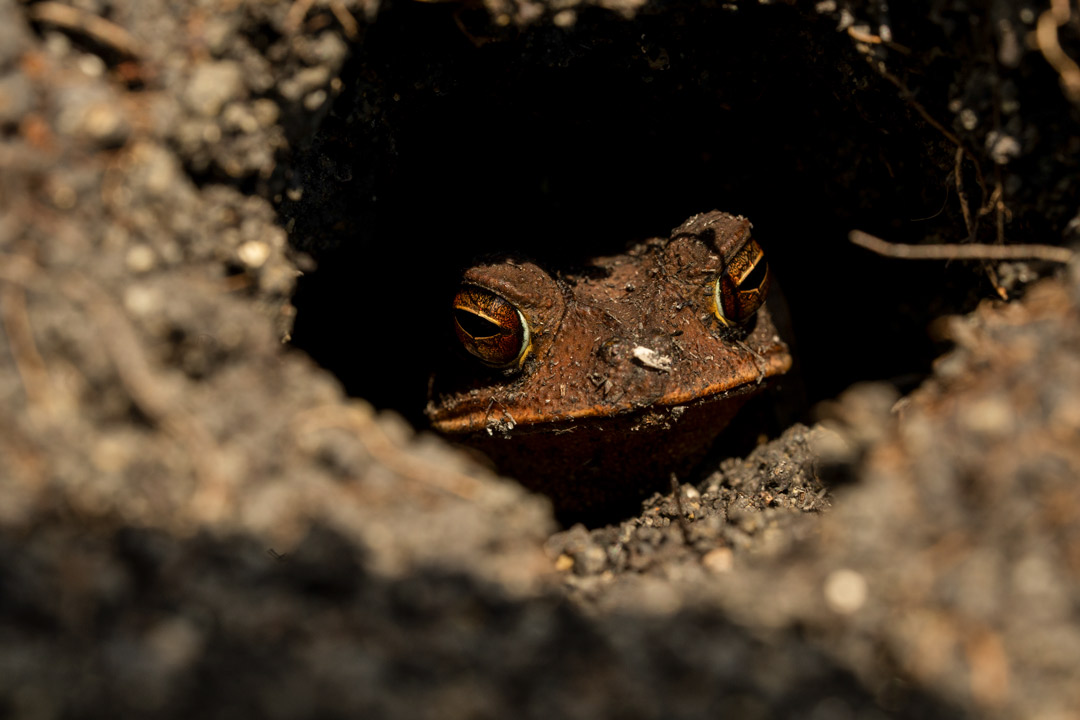Posted by Flor Morales Arroyo on April 29, 2024
Smilisca cyanosticta on a leaf. Photograph by: Erick Flores, 2018. FLAAR Mesoamerica.
Human well-being depends directly or indirectly on the services provided by ecosystems. Amphibians represent a high proportion of global species diversity and include species widely distributed around the world that perform a variety of functions that benefit humans. They keep insect pest populations in check, help control algal blooms in the water, and facilitate decomposition and nutrient cycling through waste excretion, improving soil quality by digging burrows, and are also an important food source for several types of organisms, including animals such as mammals, birds, fish, reptiles and even other amphibians. In addition to all the natural factors, amphibians have helped advance medicine and science by being studied as model organisms.
Smilisca baudinii resting on a leaf. Photograph by: David Arrivillaga, FLAAR Mesoamerica, 2019. Parque Nacional Yaxhá-Nakum-Naranjo, Petén, Guatemala.
They have an important ecological and economic role within ecosystems. They are essential in the food chain, both in water and on land. Without them, the chances of our ecosystems collapsing are high. Amphibians are considered accurate indicators of environmental health and habitat quality due to their high vulnerability to pollution and environmental changes, which is why they are considered “bioindicators.” Simply put, if you see a frog or salamander, you'll probably think the environment is healthy. This good environmental quality is important not only for amphibians, but for all nature and biodiversity, including humans. In Neotropical ecosystems they play a key role in energy flow and nutrient cycling in both aquatic and terrestrial environments.
There are many indirect ecosystem services that animals provide us. Such as diseases control, agricultural pests control, dispersal and frugivory, nutrient cycling, and so on. That said, the service of amphibians in controlling pest populations is closely related to human health. Adult amphibians feed on mosquitoes and biting flies, and tadpoles eat mosquito larvae, reducing the vector population that is responsible for the spread of many human and veterinary diseases. Amphibians are efficient predators of medically important pests, as amphibians can take advantage of all stages of their life history as vector pests in different habitats in many biomes.
Incilius sp. on a log. Photograph by: María Alejandra Gutiérrez, FLAAR Mesoamerica, 2020. Petexbatún, Petén, Guatemala.
Due to global warming and climate change, tropical mosquito-borne diseases are migrating to areas where they were not previously found, affecting more people each year as global temperatures continue to rise. Amphibians in tropical areas where these species of tropical pathogens and pathogenic vectors typically live have coevolved with them and, through the process of evolution, have improved the efficiency with which they consume these pathogenic vectors. However, if tropical amphibians continue to decline, there will be no other predators that can consume tropical disease vectors with the same efficiency. It is therefore extremely important to conserve amphibians, especially highly threatened tropical species, as global climate change trends and pathogen migration will continue, and amphibians will be a useful tool to reduce the number of pathogen-carrying insects.
Incilius sp. in leaf litter. Photograph by: David Arrivillaga, FLAAR Mesoamerica, 2022. Reserva de la Biosfera Maya, Petén, Guatemala.
Amphibians’ skin is a complex organ that fulfills a wide range of functions necessary for their survival. The skin contains glands that synthesize a wide range of chemical compounds that protect against infections by bacteria, fungi, and predators. The number and diversity of compounds produced is surprisingly high, and compounds include biogenic amines, bufadienolides, alkaloids, peptides, and proteins. These molecules could probably be useful in treating respiratory and skin infections. Some have been isolated, identified and characterized, which has led to the development of medicinal products for human and veterinary use. Additionally, frogs have been investigated in studies on embryology, growth, and toxic substances; and salamanders are the focus of many studies because of their ability to regrow limbs and other parts. Overall, it is safe to say that amphibian biology teaches us about evolution, health, and natural processes.
Incilius sp. in leaf litter. Photograph by: David Arrivillaga, FLAAR Mesoamerica, 2022. Reserva de la Biosfera Maya, Petén, Guatemala.
Cultural services are non-material benefits obtained through contact with surrounding ecosystems. These are determined by human perception of their environment, which in turn is a product of their knowledge of the community to which they belong. Many rural and urban populations in the Neotropics use certain species of amphibians as good luck charms. Its connotation of fertility is reinforced by the fact that frogs and toads lay thousands of eggs. The frog also served as an important symbol in Native American cultures, as the Mayans, for example, were shown as the musicians of the rain god Chac. They also represent flowering processes attributed to these animals appearing out of nowhere after heavy rains. Additionally, amphibians have been a source of inspiration for folklore, the arts, and corporate marketing campaigns in many countries.
Incillius valliceps Photograph by: Edwin Solares, FLAAR Mesoamerica, 2022. Parque Nacional Laguna del Tigre, Petén, Guatemala.
Unfortunately, amphibians are in current trouble primarily due to climate change, chytridiomycosis, and pollution. Despite conservation efforts, they face a mass extinction crisis. This is alarming, because they represent a healthy environment that is also directly related to human health. That said, amphibians are at the heart of many environments and play key roles in the functioning of ecosystems, and it is surprising to see that in just a few decades the world could lose half of all these crucial species. With that being said, hy amphibians should matter more to us than we think since without them we would lose all the services that we enjoy as a human population and that we are normally not aware of.
Incillius valliceps hidden in a burrow. Photograph by: Edwin Solares, FLAAR Mesoamerica, 2022. Parque Nacional Laguna del Tigre, Petén, Guatemala
In FLAAR Mesoamerica during our field trips we have photographed some amphibian specimens. We hope that our work helps to spread the importance of these small vertebrates and that little by little we come together more to protect them.
References
- 2015
- Ecological functions of neotropical amphibians and reptiles: a review. Revista Javeriana, Vol, 20, No. 2, Pages 229 - 245.
- 2008
- Why amphibians are important. International Zoo Yearbook, Vol. 42, No. 1, Pages 7 - 14.
- 2014
- Amphibian contribution to ecosystem services. Herpetological and Biology.
Available Online:
www.herpconbio.org/Volume_9/Issue_1/Hocking_Babbitt_2014.pdf
- 2007
- Amphibians as Models for Studying Environmental Change. ILAR Journal, Vol. 48, No. 3, Pages 270 - 277. DOI: https://doi.org/10.1093/ilar.48.3.270
- 2013
- Ecosystem services provided by amphibians and reptiles in Neotropical Ecosystems. International Journal of Biodiversity Science, Ecosystem Services & Management, No. 9, Vol. 3, Pages 257 - 272.
- 2018
- Importance of Amphibians: A Synthesis of Their Environment Functions, Benefits to Humans, and Need for Conservation. In BSU Honors Program Theses and Projects, Item 261.
- 2006
- The effects of amphibian population declines on the structure and function of Neotropical stream ecosystem. Frontiers in Ecology and the Environment, Vol. 4, No. 1, Pages 27 - 34. DOI: https://doi.org/10.1890/1540-9295(2006)004[0027:TEOAPD]2.0.CO;2






























